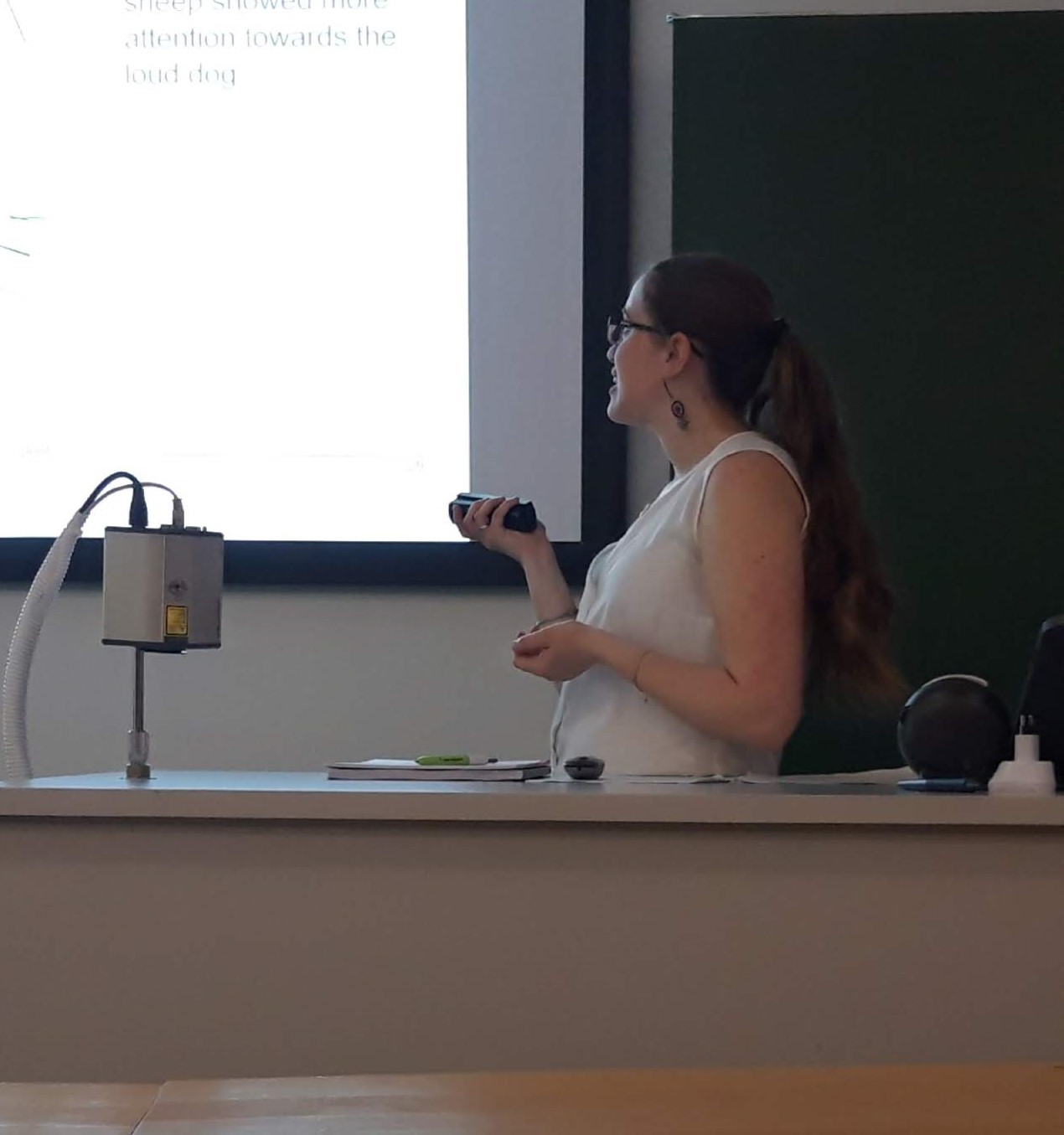Conferences & Talks
CONTRIBUTIONS TO INTERNATIONAL CONFERENCES
ISAE 2020 Global Virtual Meeting, Web European Session, August 2020: “Detection of dairy cows’ hind-legs activity during milking using a 3D-accelerometer attached to the milking cluster” (talk) video link
ASAB Winter Meeting, London (UK), December 2018: “Attention bias test in sheep with different induced mood” (talk)
50. Internationale Tagung Angewandt Ethologie, Freiburg (DE), November 2018: “Measuring attention toward acoustic stimuli in sheep” (talk)
ISAE Congress 2018, Prince Edward Island (CA), August 2018: “Assessing differential attention to simultaneous negative and positive video stimuli in sheep: moving toward attention bias” (talk)
49. Internationale Tagung Angewandt Ethologie, Freiburg (DE), November 2017: “Validation of video stimuli in respect to their valence and intensity in sheep using an approach - avoidance paradigm and operant conditioning” (talk)
CONTRIBUTIONS TO REGIONAL MEETINGS AND LOCAL SEMINARS
Projektplattform, Agroscope Tänikon (CH), June 2019: “Aufmerksamkeitsbias-Test bei Schafen” (talk)
BLV Wissensmanagement Besuch, ZTHT, Agroscope Tänikon (CH), June 2019: “Aufmerksamkeitsbias bei Schafen” (talk)
Public PhD thesis defense, University of Bern, Bern (CH), May 15th 2019: “Effect of mood on cognitive judgement and attention biases in animals” (talk)
Seminar for PhD candidates, Agroscope Tänikon (CH), April 2019: “Effect of mood on cognitive judgement and attention biases” (talk)
Symposium of the Graduate School for Cellular and Biomedical Sciences Symposium in Bern (CH), January 2019: “Attention bias test in sheep” (talk)
Seminar for PhD candidates, Agroscope Tänikon (CH), November 2018: “Attention bias test in sheep with different induced mood” (talk)
Swiss Walks and Talks, Ranflüh (CH), June 2018: “Toward an attention bias test in sheep using acoustic stimuli” (talk)
Public Thesis Mid-term Evaluation, Division of Animal Welfare, University of Bern, Bern (CH), February 2018: “Development of an attention test in sheep to assess farm animal welfare” (talk)
Seminar for PhD students, Agroscope Tänikon (CH), July 2018: “Assessing differential attention to simultaneous negative and positive video stimuli in sheep: moving toward attention bias” (talk)
Symposium of the Graduate School for Cellular and Biomedical Sciences Symposium in Bern (CH), January 2018: “Mood as cumulative expectation mismatch: A test of theory based on data from non-verbal cognitive bias tests” (poster)
Tierhaltungssysteme & Ethologie's team seminar, Humboldt Universität zu Berlin, Berlin (DE), November 2017: “Validation of video stimuli in respect to their valence and intensity in sheep using an approach - avoidance paradigm and operant conditioning” (talk)
Swiss Walks and Talks, Kandersteg (CH), June 2017: “Validation of video stimuli in respect to their valence and intensity in sheep using an approach - avoidance paradigm and operant conditioning” (talk)
Presentation for the Besuchstag HAFL - Studierende Agrarwirtschaft, Agroscope Tänikon (CH): “Attention bias test in sheep: using social videos, approach-avoidance paradigm and operant conditioning” (talk)
Swiss Walks and Talks, Churwalden (CH), June 2016: “Development of an attention bias test in sheep to assess farm animal welfare - Part 1. Choice of positive-negative stimulus pair with well-balanced strength” (talk)
Seminar for PhD students, Agroscope Tänikon (CH), May 2016: “Development of an attention bias test in sheep to assess farm animal welfare - Part 1. Choice of positive-negative stimulus pair with well-balanced strength” (talk)





















